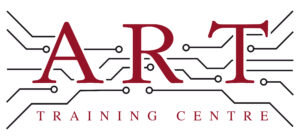Definition
Pad is a conductive area on a printed circuit board (PCB) where electronic components are attached. It serves as a connection point for soldering components like resistors, capacitors, and integrated circuits. Pads can vary in size and shape, depending on the component they support. They are essential for ensuring reliable electrical connections and are a fundamental aspect of electronics manufacturing and assembly.
How It’s Used in the Industry
In electronics assembly, pads are critical during the soldering process. First, pads are printed onto the PCB using a photolithography process. Once the components are placed on these pads, soldering methods such as wave soldering or reflow soldering are applied to create strong electrical connections. During rework, if a component needs replacing, technicians often heat the solder and remove the component from the pads. Proper pad design and maintenance are crucial for both technicians in training and experienced professionals, as they directly impact the reliability and performance of the final product.
History & Origins
The use of pads in electronics manufacturing became common in the mid-20th century with the rise of printed circuit boards (PCBs). The development of standards, such as those established by IPC (Institute for Printed Circuits), further defined the specifications for pad design and layout. As technology advanced, the importance of pads grew, especially with the increasing complexity of electronic devices and the shift towards surface mount technology (SMT) in the 1980s, which required precise pad dimensions for effective soldering.
Variations
There are various types of pads, including surface mount pads and through-hole pads. Surface mount pads are designed for components that sit directly on the surface of the PCB, while through-hole pads accommodate components with leads that pass through the board. Another variation is the thermal pad, which is used for heat dissipation in high-power applications. Each type of pad serves a specific function and is designed according to the requirements of the components it supports, ensuring optimal performance and reliability.
Modern Applications
Today, pads are integral to both surface mount and through-hole assembly processes in electronics production. They are critical in ensuring quality and reliability, especially in high-density circuits and advanced electronic devices. Compliance with IPC standards for pad design is essential, as it affects solderability and overall product performance. In professional training, understanding pad specifications and their applications is vital for technicians to ensure they can produce and repair PCBs effectively.
Practical Tips & Training
When working with pads, it is important to inspect them for cleanliness and proper alignment before soldering. Using the right tools, such as soldering irons with appropriate tips and magnifying equipment for inspection, can enhance the quality of connections. Safety precautions, such as using anti-static wrist straps, are essential to prevent damage to sensitive components. Structured training and certification in electronics can help technicians develop the skills needed to work effectively with pads and ensure high-quality assembly and repair processes.


